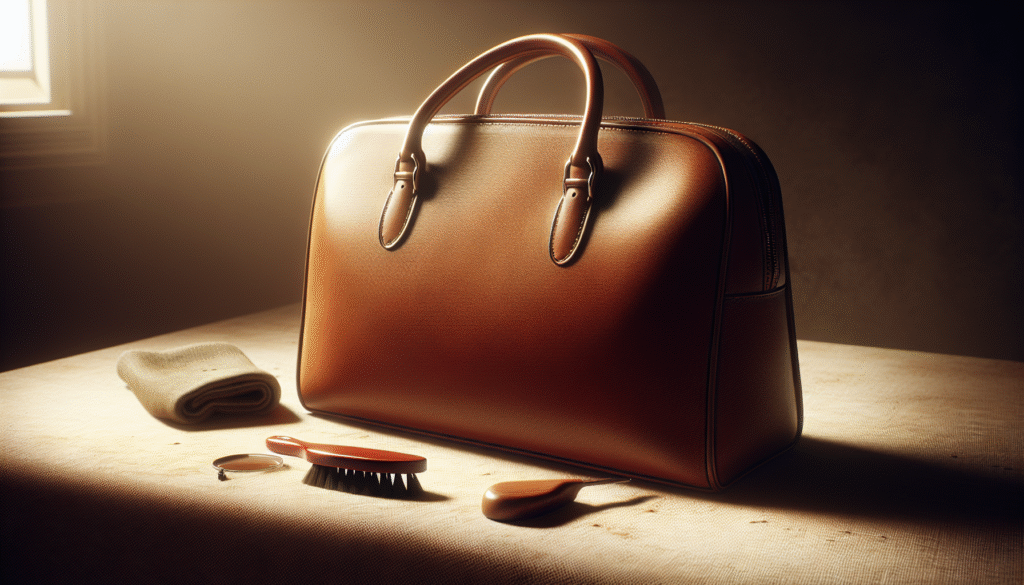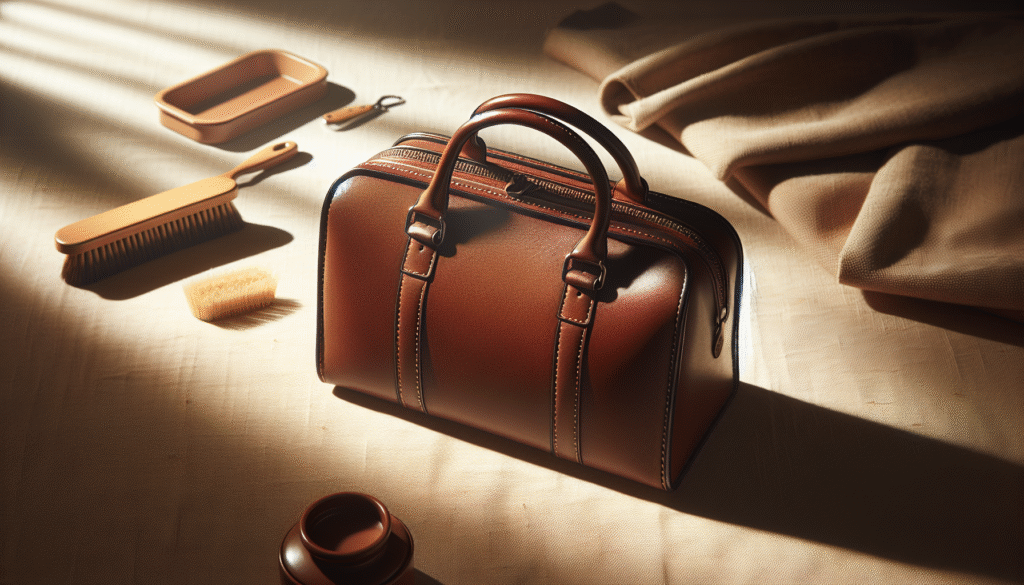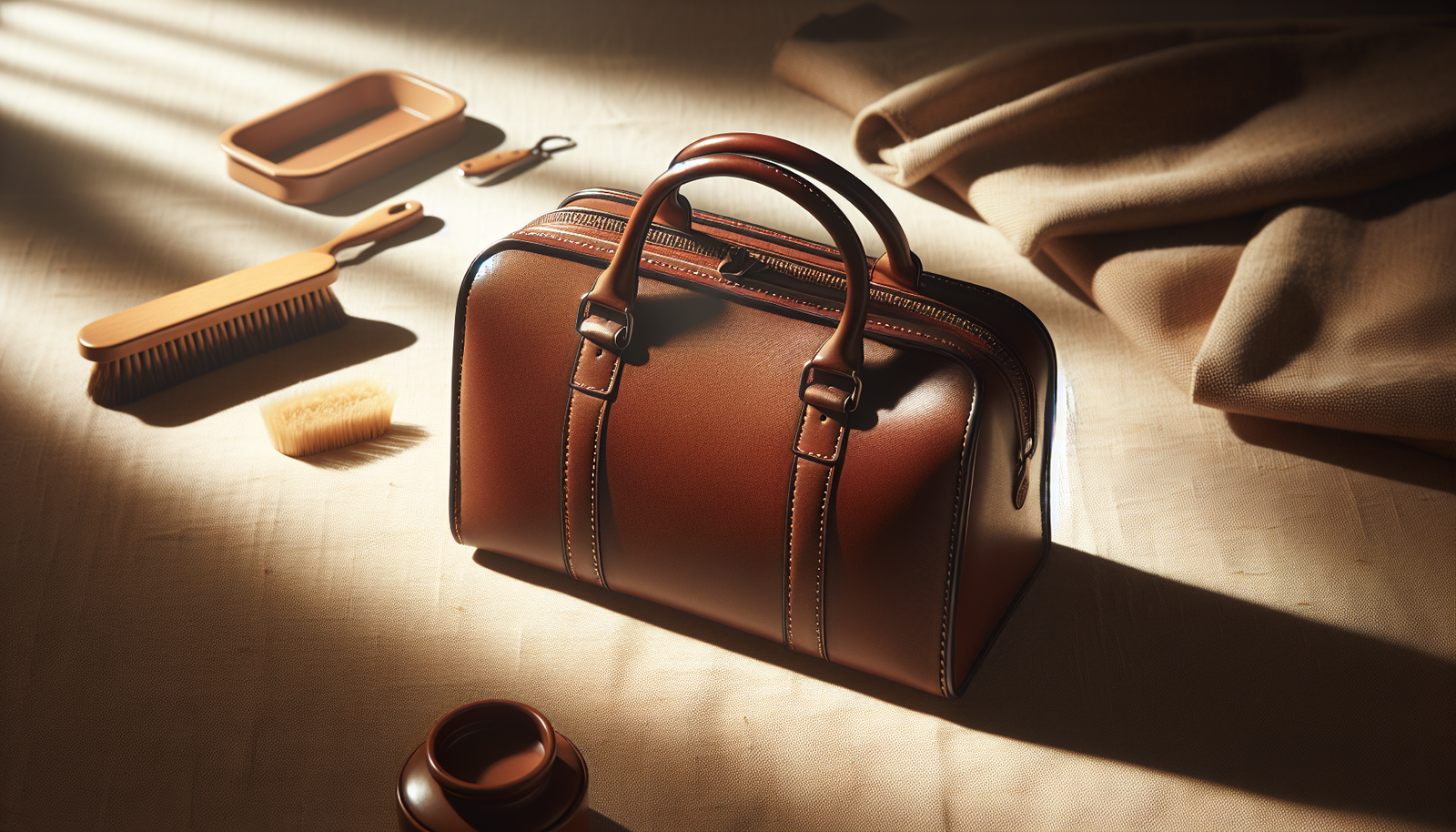Looking to keep your leather handbag looking beautiful and stylish every day?
Leather Handbags Care and Style Guide for Everyday Use

Why your Leather Handbag matter
Your Leather Handbags are more than a practical accessory; it reflects your personal style, investment choices, and daily habits. When you care for it properly, Leather Handbags can look better with age and become a signature piece in your wardrobe. This section explains the value of proper care so you understand why the steps below are worth your time.
How Leather Handbags age and why that matters
Leather is a natural material that responds to light, moisture, oils, and handling. You’ll notice patina, softening, and sometimes small scratches over time. Those changes can add character if you maintain the leather’s health, while neglect can lead to cracking, discoloration, and structural failure.
Types of leather in Leather Handbags and how they behave
Different leathers require different care. Recognizing the type of leather your handbag is made from will help you treat it correctly and avoid damage. Below is a concise table to help you identify common leather types.
| Leather type | Appearance & feel | Characteristics | Typical care needs |
|---|---|---|---|
| Full-grain | Natural grain visible, firm yet supple | Most durable; develops rich patina | Conditioning, gentle cleaners; avoid heavy polishing |
| Top-grain | Smooth surface, slightly more uniform | Slightly sanded/finished; still high quality | Light conditioning and cleaning; safe with mild products |
| Corrected-grain/embossed | Very uniform, often glossy | Pigmented surface hides marks | Wipe clean; avoid strong abrasives that remove coating |
| Nubuck | Suede-like, velvety nap | Soft, more prone to staining | Use suede/nubuck brushes, protective sprays |
| Suede | Soft, fuzzy surface on inner side | Delicate, easily stained | Dry brushing, special cleaners, protective spray |
| Patent leather | Shiny, lacquered finish | Very glossy, resistant to moisture | Wipe with soft cloth; avoid strong solvents |
Choosing the right Leather Handbags for everyday use
When you pick Leather Handbags for daily wear, consider size, structure, hardware, and leather type. You’ll want a bag that fits essentials, supports your daily routine, and matches your wardrobe. Durable hardware and reinforced handles will extend the bag’s useful life, and full-grain or top-grain leathers are best for frequent use.

Daily care: simple habits that make a big difference
Establishing a few daily routines will dramatically extend your Leather Handbags life. These small steps prevent buildup and reduce the need for deep cleaning.
- Remove debris: Empty the Leather Handbags and shake out crumbs or loose items daily.
- Wipe surfaces: Use a soft, dry microfiber cloth on finished leather to remove fingerprints and dust.
- Mind your placement: Avoid placing your bag on dirty or wet surfaces; hang it where possible.
- Rotate bags: If you own several, rotate daily to reduce wear on a single bag.
Detailed cleaning methods by leather type
Cleaning leather of your Leather Handbags correctly prevents discoloration, dryness, or surface stripping. Use the appropriate cleaner and technique for your bag’s leather type.
Finished leather (full-grain and top-grain)
These leathers in Leather Handbags handle gentle cleaning and conditioning well.
- Use a soft cloth slightly dampened with distilled water and a mild pH-balanced saddle soap or leather cleaner.
- Test in an inconspicuous area first.
- Wipe in circular motions, avoid over-wetting.
- Let it air dry away from heat and direct sunlight.
- Condition with a small amount of leather conditioner, then buff lightly.
Corrected-grain and coated leather
These Leather Handbags are easier to maintain but can show wear if abrasive products are used.
- Wipe with a damp cloth and mild soap; avoid alcohol-based cleaners that strip finish.
- For scuffs, a soft rubber eraser or a gentle non-abrasive cleaner made for coated leather can help.
- Avoid heavy oils and waxes that may change the sheen.
Nubuck and suede
These Leather Handbags require specialized tools to maintain nap and resist stains.
- Use a soft suede brush or nubuck cloth to lift dirt.
- For stains, a suede eraser or a small amount of dedicated suede cleaner, applied sparingly, works best.
- Avoid water stains by using a protective spray formulated for suede/nubuck.
Patent leather
The glossy finish of Leather Handbags needs simple care.
- Wipe with a soft cloth and warm water.
- For scuffs, a small amount of mineral oil or petroleum jelly can restore shine—test first.
- Avoid direct heat that can crack the lacquer.

Stain removal: do’s and don’ts
When a stain occurs, act quickly. The right response depends on the stain type.
Common stains and treatment in Leather Handbags
- Water spots: Blot immediately and allow air-drying; for finished leather, a light conditioning can help even tone.
- Oil/grease: Sprinkle cornstarch or talcum powder to absorb oil; leave overnight and brush off; repeat if necessary and then clean with leather cleaner.
- Ink: Ink is challenging—try a specialized ink remover or rubbing alcohol on a cotton swab very sparingly and only on finished leather. For precious pieces, seek professional help.
- Dye transfer (from denim): This often requires a leather-specific cleaner with stain-removal properties; test hidden area first. Professional restoration may be safest.
Stain removal steps to avoid in Leather Handbags
- Do not scrub aggressively; scrubbing can remove dye and finish.
- Do not soak leather in water.
- Do not use household bleach, ammonia, or strong solvents.
- Avoid alcohol-based cleaners on unfinished leathers like suede or nubuck.
Conditioning and protecting your Leather Handbags
Conditioners replenish natural oils, preventing cracking and stiffness. Protection products add a barrier against moisture and dirt.
How often to condition Leather Handbags
- For daily-use finished leather: condition every 3–6 months.
- For dry climates or older leather: every 2–3 months.
- For suede/nubuck: use protective sprays rather than oil-based conditioners.
Choosing the right conditioner for Leather Handbags
- Use pH-balanced, leather-specific conditioners.
- Avoid generic oils (like olive oil) which can darken and damage leather long-term.
- For vintage or delicate pieces, use a neutral, non-dye conditioner.

Hardware care and zippers in Leather Handbags
Metal hardware and zippers contribute to both function and aesthetics. Clean them gently and tighten loose screws when needed.
- Wipe with a soft cloth to remove fingerprints.
- Use a small brush for crevices.
- For tarnish, use a non-abrasive metal cleaner appropriate to the metal type—test first near seams.
- Lubricate zippers with graphite or a zipper wax if they stick.
Storage: how to store your handbag the right way
Proper storage prevents distortion, color changes, and musty odors in Leather Handbags.
- Stuff the Handbag with acid-free tissue paper or a soft cloth to maintain shape—avoid newspaper because ink can transfer.
- Store in a breathable dust bag or pillowcase to protect from dust but allow airflow.
- Keep away from direct sunlight and heat sources that dry the leather.
- Store handles protected, especially if they’re thin or prone to creasing; use bubble wrap or cloth to cushion if stacking.
- For long-term storage, check periodically and re-condition if leather seems dry.

Travel and weather-proofing tips for Leather Handbags
Your daily routine may include rainy commutes or travel. Preparing your bag helps you avoid common problems.
- Rain: Keep a compact umbrella or waterproof cover. If your finished leather gets wet, blot and let air dry naturally, then condition.
- Snow and salt: Avoid contact; if it happens, gently wipe off salt residue with a damp cloth and condition afterwards.
- Heat: Do not leave leather in a hot car or direct sun; heat can cause cracking and fading.
- Flight: Keep delicate items in carry-on. Use a protective insert for structure and to protect contents.
Quick reference cleaning and product table
Use this table as a quick guide when choosing cleaning and protection products.
| Task | Leather types | Recommended products | Frequency |
|---|---|---|---|
| General cleaning | Full-grain, top-grain | pH-balanced leather cleaner, microfiber cloth | Weekly light wipe; deep clean quarterly |
| Condition | Full-grain, top-grain | Leather conditioner, cream or oil-based for dry leather | Every 3–6 months |
| Protection | Suede, nubuck | Suede/nubuck protective spray | After cleaning and before first use; reapply every few months |
| Minor scuffs | Coated, patent | Non-abrasive cleaner, mineral oil for patent | As needed |
| Stain treatment | All types (type-dependent) | Cornstarch (oil), saddle soap (finished), suede eraser (suede) | Spot treatment immediately |
Repairs and professional care of Leather Handbags
For serious damage—large stains, deep scratches, structural issues, or lining replacements—you’ll want professional help. A reputable leather repair specialist can re-dye, re-stitch, or reinforce parts to extend the bag’s life.
- Choose a specialist with experience in luxury handbags if your bag is high-end.
- Ask for a written estimate and before/after photos of similar repairs.
- Small household repairs (loose thread, minor hardware tightening) can be DIY, but avoid structural fixes without proper tools.
Styling tips for everyday looks
Your leather handbags should complement your daily outfits and lifestyle. Here are practical tips to keep your look polished and coordinated.
Match by color and mood
Neutral bags (black, tan, navy) are versatile and match most outfits. Bright or patterned bags can be your statement piece—use them to add personality to simple outfits.
Consider proportion and silhouette
Balance proportions: structured medium-sized bags work well with tailored looks; slouchy hobo styles pair nicely with casual, relaxed outfits. Choose a strap length that complements your torso so the bag sits comfortably and flatters your silhouette.
Hardware and outfit coordination
Match metals and finishes—gold hardware generally looks best with warm-toned outfits, while silver or gunmetal complements cooler palettes. Mixed metals can work if done intentionally and sparingly.
Transitioning from day to night
Carry a compact clutch or use a removable strap to transform a daytime tote into an evening piece. Keep a small pouch with evening essentials to quickly swap into a smaller bag if needed.
Outfit pairings: quick suggestions
- Casual jeans and tee: try a crossbody in a soft leather for hands-free convenience.
- Workwear: a structured tote in full-grain leather communicates professionalism and holds essentials.
- Weekend dress: a small shoulder bag or mini-bucket offers balance without overpowering a feminine silhouette.
- Athleisure: choose a sporty leather backpack or belt bag to maintain comfort and style.
Common mistakes to avoid in Leather Handbags
Knowing what not to do is as important as following good practices.
- Don’t use household cleaning products not designed for leather.
- Don’t over-condition; too much product can make leather sticky or attract dirt.
- Don’t store in plastic bags; lack of airflow causes mildew.
- Don’t ignore hardware; small issues can weaken structure over time.
Sustainability and ethical considerations
If sustainability matters to you, consider these points when selecting and caring for leather:
- Choose durable, well-made bags that last longer to reduce waste.
- Look for vegetable-tanned leather or brands with transparent, ethical sourcing.
- Maintain and repair your bags rather than replace them frequently.
- Consider secondhand or vintage leather as a sustainable option.
Frequently asked questions (FAQ)
This short FAQ addresses common concerns you may have about leather bag care.
Can you wash a leather handbag in a washing machine?
No. Washing machines will strip coatings, warp shape, and damage stitching. Use spot cleaning or professional services.
Will leather darken after applying conditioner?
Some conditioners can darken leather slightly, especially on lighter colors. Test on an inconspicuous area first.
How do you remove odor from a leather bag?
Air it out in a dry, shaded area. Place a bowl of baking soda or activated charcoal inside the bag overnight to absorb odors. Washable liners can also help if the bag allows.
Is it okay to use baby wipes on leather?
Avoid baby wipes with alcohol or strong fragrances. If you must, test first and use those labeled as gentle with no alcohol.
Images and video suggestions for this topic
While actual images and videos aren’t embedded here, you can use the following suggestions to build visual content that supports this guide:
- Hero image idea: A well-lit photograph of a structured leather handbag on a neutral background, showing texture and hardware.
- Close-ups: Macro shots of leather grain, edge finishing, stitching, and hardware to illustrate quality details.
- Before-and-after sequences: Photos showing a bag before cleaning and after conditioning to demonstrate results.
- Step-by-step cleaning video: Short clips showing testing on an inconspicuous area, gentle cleaning with a cloth, and the conditioning process.
- Suede/nubuck care video: Demonstrate brushing techniques and the application of protective spray.
- Travel packing video: Showing how to stuff, protect, and pack a leather tote for a flight.
- Alt text examples: “Full-grain leather tote with brass hardware on wooden table,” “Close-up of nubuck suede texture,” “Demonstration of leather conditioner applied with microfiber cloth.”
- Stock search terms: “full-grain leather handbag close-up,” “leather bag care tutorial,” “suede brush demonstration.”
Quick daily and monthly care checklist for Leather Handbags
Use this checklist to keep your leather handbag in top shape.
Daily:
- Empty and shake out crumbs.
- Wipe down finished leather surfaces.
- Store on a hook or shelf when not in use.
Weekly:
- Check hardware for loose screws.
- Brush suede/nubuck if showing dust.
Monthly:
- Spot-clean visible marks.
- Apply protective spray for suede or a light conditioner for finished leather as needed.
Seasonally:
- Deep clean and condition before cold or rainy seasons.
- Inspect seams and lining for wear; plan repairs before damage worsens.
Buying tips to make maintenance easier
When you next shop for a leather handbag, think about maintenance ahead of time.
- Choose top-grain or full-grain leather for durability.
- Opt for a color that hides daily wear (medium neutrals are forgiving).
- Prefer simple interior lining that’s easy to clean or removable.
- Check that hardware is solidly attached and zippers run smoothly.
- Seek bags with reinforced bases if you’ll set them down frequently.
Final thoughts
By building gentle daily habits, using the right products for your leather type, and storing bags correctly, you’ll keep your Leather Handbags functional and stylish for years. Treating your bag as an investment in both function and fashion will help it become a wardrobe staple that grows more attractive with age. When in doubt about serious stains or structural damage, consult a professional who specializes in leather restoration so you preserve the bag’s value and appearance.
If you’d like, you can tell me the specific leather type or brand of your handbag and I’ll suggest precise cleaning and conditioning steps tailored to that item.


